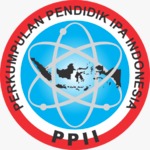Analisis Konsepsi Peserta Didik Menggunakan Instrumen TIMSS (Trends in International Mathematics and Science Study) pada Materi Gravitasi
DOI:
https://doi.org/10.29408/kpj.v6i2.6908Keywords:
konsepsi, TIMSS, gravitasiAbstract
Gravity is a concept that is considered difficult for students and it is not uncommon for them to experience misconceptions about this concept. This study aims to analyze students' conceptions of the concept of gravity. The research was conducted at SMPN 1 Aikmel, West Nusa Tenggara, Indonesia. The sample consisted of 28 Class VIII students who were taken by simple random sampling technique. The instrument used is a standard test instrument used by TIMSS (Trends in International Mathematics and Science Study) by selecting content about the concept of gravity. Research data were analyzed using descriptive statistics. The results of the data analysis showed that only 32.14% of students were able to answer questions correctly. When compared with the average percentage of students at the international level for the same concept (Gravity), the number of students at SMPN 1 Aikmel is still below the international average (48.28%). This shows that the level of students' understanding of concepts at SMP 1 Aikmel is below the international average. This can be used as an illustration for teachers at SMPN 1 Aikmel and even for junior high school teachers in East Lombok Regency, considering that SMPN 1 Aikmel is the school with the second-highest National Exam (UN) scores in East Lombok.References
Blizak, D., Chafiqi, F., & Kendil, D. (2009). Students misconceptions about light in Algeria. In Education and Training in Optics and Photonics (p. EMA5). Optical Society of America. Retrieved from: https://opg.optica.org/abstract.cfm?uri=ETOP-2009-EMA5
Hadi, S. & Novaliyosi (2019). TIMSS Indonesia (Trends In International Mathematics And Science Study). Prosiding Seminar Nasional & Call For Papers, (pp. 562-569). Tasikmalaya, Indonesia, Magister Pendidikan Matematika, Universitas Siliwangi.
Jones, & Zanker, N. P. (2013). Applying laser cutting techniques through horology for teaching effective STEM in design and technology. Design and Technology Education, 18 (3), 21–34.
Michael, Martin, Ina, Mullis, Foy, P., & Hooper, M. (2015). TIMSS 2015 International Results in Science, International Study Center, Linch School of Education, Boston College.
Santrock, John W., (2014). Psikologi Pendidikan Edisi 5 Buku 2. Terjemahan Harya Bhimasena. Jakarta: Salemba Humanika.
Setyosari, P., & Widijoto, H. (2007). Metode Penelitian Pendidikan. Malang: Fakultas Ilmu Pendidikan Universitas Negeri Malang.
Simbolon, H. Simbolon, M. R., & Harahap, F. (2019). An Analysis of Students’ Scientific Literacy Skillsin State Senior High Schools throughout Central Tapanuli District. Advances in Social Science, Education and Humanities Research, 384, 105-109.
Sugiyono, (2012). Statistika Untuk Penelitian. Bandung: Alfabeta
Suparno, & Paul. (2005). Miskonsepsi dan Perubahan Konsep dalam Pendidikan Fisika. Jakarta: Grasindo.
Thomson, S., Wernert, N., O’grady, E., & Rodrigues, S. (2017). Reporting Australia’s results. www.acer.edu.au
Verawati, Y., Supriatna, A., Wahyu, W. & Setiaji, B. (2019). Identification of student’s collaborative skills in learning salt hydrolysis through sharing and jumping task design. International Conference on Mathematics and Science Education (ICMScE), Journal of Physics: Conference Series, 1-5.









